Pollu disease(Anthracnose) in Black pepper
Anthracnose or fungal ‘Pollu’ disease in black pepper is caused by the fungus Colletotrichum gloeosporioides.The disease affects leaves, spikes and berries
In India, this is known as fungal ‘pollu’ disease.In Malaysia/Indonesia it is known as black berry disease.
The disease is seen mainly after monsoon season. And control of the disease is very much important to save the crop.
Common signs and symptoms
On young leaves and spikes, the disease is characterized by grey white to dark brown spots of varying size with several dark dots on it which is surrounded by a yellowish hallow.
Signs differs from sikes to berries.
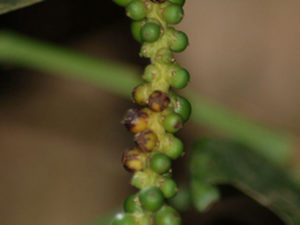 On spikes, black discoloration appears on the attached portion of the stem, later leading to spike shedding which results in 100% yield loss.The infection starts from the tip of the spike and gradually progresses upwards.
On spikes, black discoloration appears on the attached portion of the stem, later leading to spike shedding which results in 100% yield loss.The infection starts from the tip of the spike and gradually progresses upwards.
On the berries, the infected berries get dry, later become hollow (Pollu) and shed in large numbers.Berries at the proximal end of the spike develop to maturity except that they exhibit minute black spot. Berries close to the diseased portion are smaller in size,
On developed berries, mild crack on pericarp of berries and further development is affected. The affected berries dry up gradually and remain as light berries leading to dry weight loss.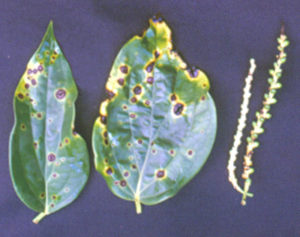
In general in India the anthracnose / black berry disease causes spike shedding,defoliation,berry shedding.
Mode of Spread
Infection begins during the period of spike emergence and subsequent development. Anthracnose disease is mainly spread by the rain splash.
The fungus Colletotrichum gloeosporioides is air borne.
Season
The disease appears towards the end of the monsoon.
Anthracnose disease – Management
Cultural practices
 Irrigating black pepper vines during summer months has been found to substantially reduce the disease symptoms. Adequate shade regulation is a must for managing this disease.
Irrigating black pepper vines during summer months has been found to substantially reduce the disease symptoms. Adequate shade regulation is a must for managing this disease.
Provide irrigation 4-5 times an interval of 5-7 days@ 40-50lit/plant commencing from 22nd March followed by shade regulation (provide 40 % shade using shade net) of support trees to provide minimum 7500-10,000 lux light under cloudy condition.
Remove and destroy all fallen leaves and spikes
Chemical control
In India, the pre-monsoon and post-monsoon spray with Bordeaux mixture (1%) or carbendazim +
mancozeb (0.1%) is recommended to check the anthracnose.
References:
1. Good Agricultural Practices (GAP) – Black Pepper by Directorate of Arecanut and Spices Development,Calicut, Kerala, India
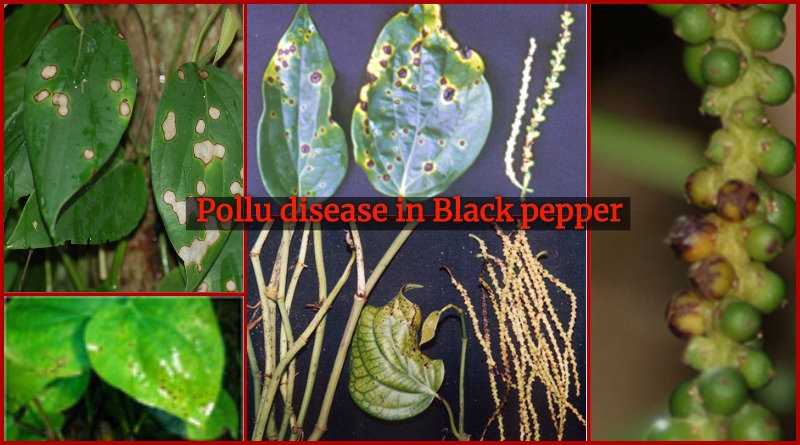
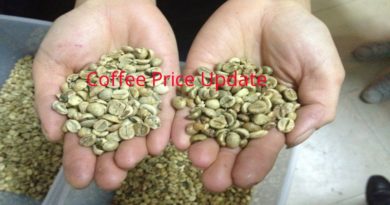
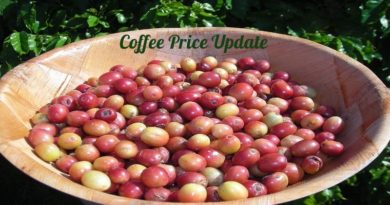
Pingback: Scale Insect attack in Pepper - Kirehalli